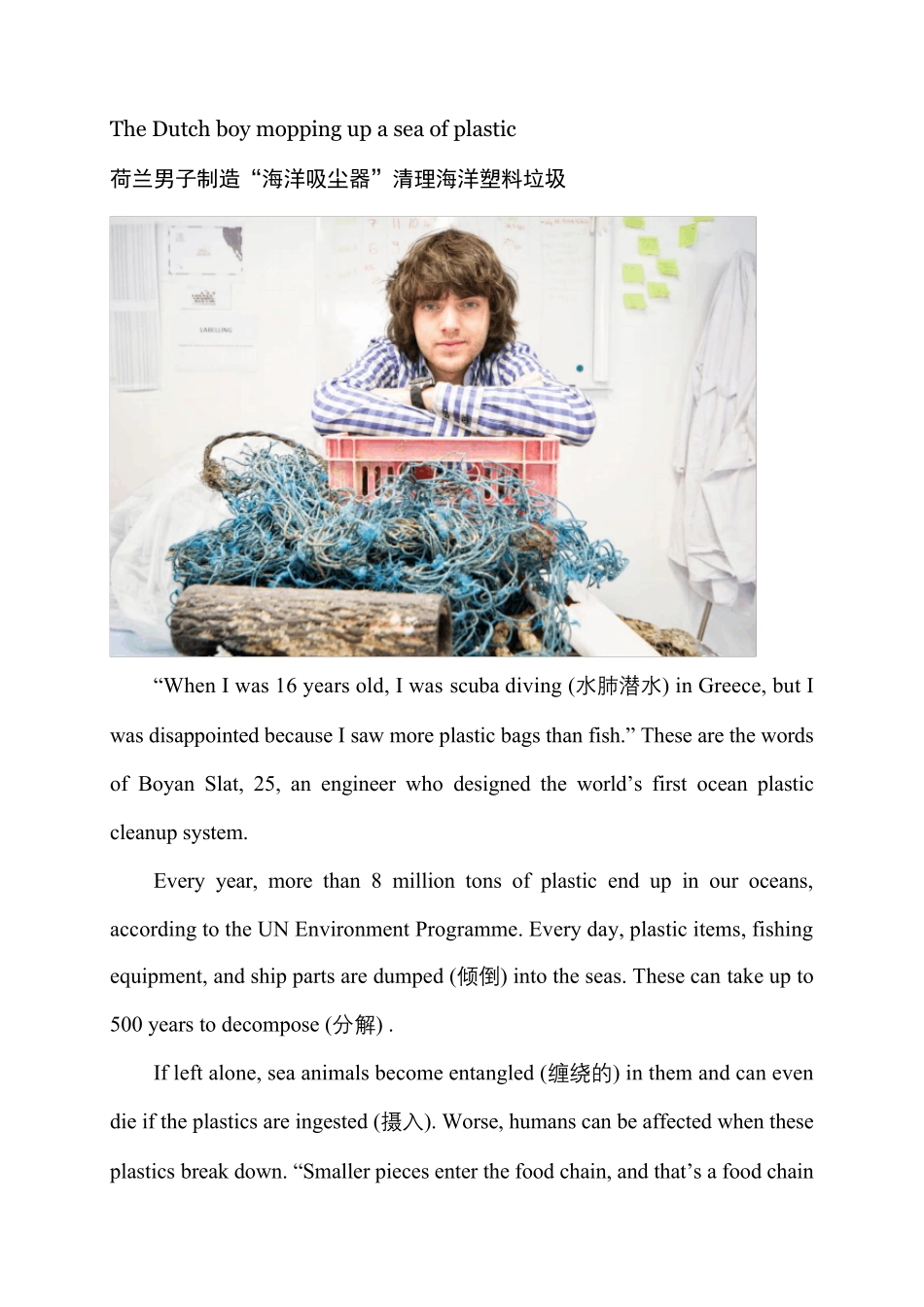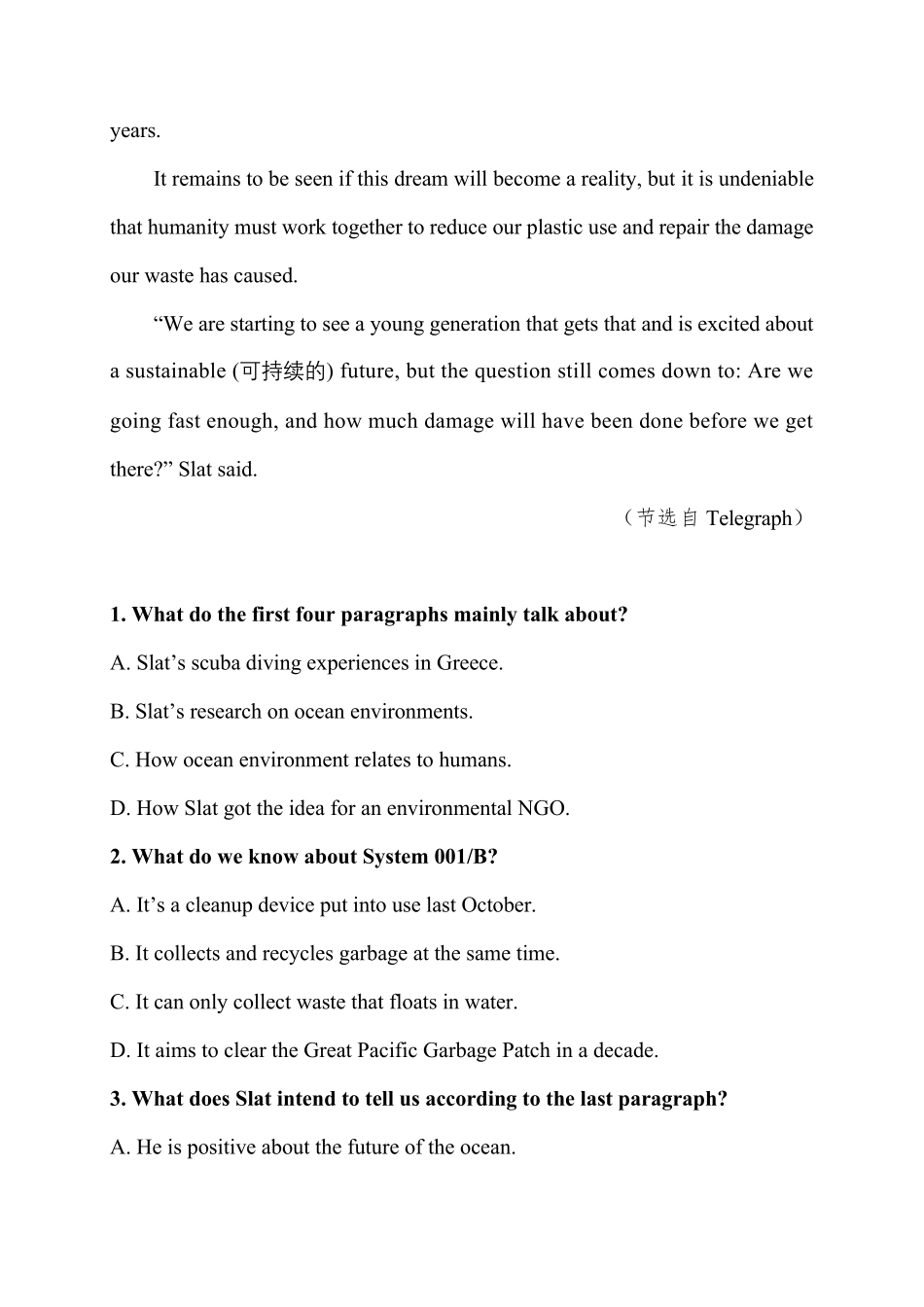The Dutch boy mopping up a sea of plastic 荷兰男子制造“海洋吸尘器”清理海洋塑料垃圾 “When I was 16 years old, I was scuba diving (水 肺 潜 水 ) in Greece, but I was disappointed because I saw more plastic bags than fish.” These are the words of Boyan Slat, 25, an engineer who designed the world’s first ocean plastic cleanup system. Every year, more than 8 million tons of plastic end up in our oceans, according to the UN Environment Programme. Every day, plastic items, fishing equipment, and ship parts are dumped (倾 倒 ) into the seas. These can take up to 500 years to decompose (分 解 ) . If left alone, sea animals become entangled (缠 绕 的 ) in them and can even die if the plastics are ingested (摄 入 ). Worse, humans can be affected when these plastics break down. “Smaller pieces enter the food chain, and that’s a food chain that includes us humans,” Slat said. In 2018, the World Economic Forum predicted that the weight of ocean plastics will match the weight of all the fish in our oceans by 2050. To prevent this grim ( 令人沮丧 的 ) reality, Slat created The Ocean Cleanup, an environmental NGO, in 2013 and put his plan for an ocean plastic cleanup device (设备) into action. After years of research and development in the Netherlands, a device called System 001/B successfully started gathering plastic on Oct 2, 2019. The device uses a 600-meter-long “C” shaped tube to gather all the floating debris (垃圾). Unlike other cleanup methods, the system floats freely according to the direction of the waves, which allows waste to flow into and stay within the device. A sea anchor (锚) is attached to either end. This slows down the system as it floats through the wa...


